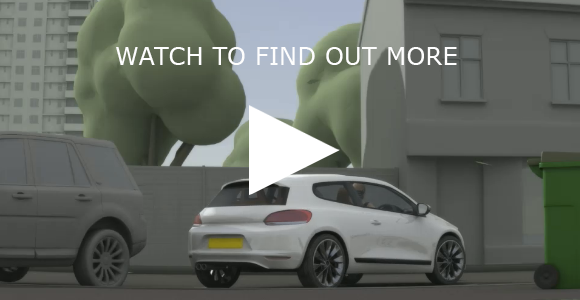|
If you can't see this email properly, click here to see on your browser.
|
|

TOP TIPS FOR WINTER DRIVING
|

|
|

|
|
CHECK YOUR CAR
|
|

|
Tyres - Ensure tyres are inflated correctly. Check your handbook or ask the manufacturer.
|
Tread should be at least to 3mm to cope with wet conditions. Consider investing in winter tyres.
|

|
Oil - Check the oil is at the correct level.
Use the right type of oil for your engine. Check your handbook or ask the manufacturer.
|
Over filling can cause problems.
|

|
Battery - Will run down quicker in winter.
Problem starting? Turn off all non-essential electricals like lights, heaters, wipers etc. Start in short 5 second bursts. Leave 30 seconds between attempts to allow battery to recover.
|
Regular long journeys make it last longer.
|

|
Wipers – Check and replace if necessary.
|
Wipers - If they freeze on the windscreen you might burn out the wiper motor or rip the rubbers when you start the engine.
Screen Wash – make sure you have it topped up and add an anti-freeze.
|

|
Antifreeze - Protects your engine against extreme cold.
Most modern cars have this checked during regular services.
|
Important to use the right type. Check your handbook or ask the manufacturer.
|

|
Lights - Make sure everyone can see you by ensuring they are all working and are on the correct setting as you drive.
|
Don’t make yourself a hazard!
|

|
Controls - Recap on where everything is. You might need fog lights suddenly and haven’t used them for a while.
|
Warning Lights – understand what they mean so you don’t panic if one comes on.
|
|
Before you head off in your car… Ask yourself is this an essential journey? If not, why risk it?
If you do have to venture out…
|
|

|
|
PLAN YOUR JOURNEY
|
|
|
Check your route is clear & have a back-up plan
|
|
Check the weather, it may be worse where you are headed
|
|
Do you have enough fuel? Being stranded in the cold can be dangerous
|
|
Do you have the right shoes to drive in?
|
|
Tell friends/family your route and expected time of arrival
|
|
Allow extra time for your journey & stick to major routes, if possible
|
|
Do you know where you will park when you get there? Avoid hills, as starting the car later with ice could be an issue.
|
|
SAFETY ABOVE PUNCTUALITY
|
|
Ultimate Winter Car Kit:
|

|
Ice scraper/de-icer
Warm clothes – coat, hat, gloves & sensible shoes in case you have to get out of the car
Blanket
Shovel
Fully charged mobile phone
Food & water
Torch
Sunglasses
Tow rope
Hi vis jacket
Warning Triangle
|
|
|
|

|
|
GET A CLEAN SCREEN
|
|
Thermal Shock - Don’t use a boiling kettle as it can crack your windows!
|

|
Defrosting your windscreen
Spray de-icer and use a proper scraper to wipe away excess ice/water.
Remember to clean off any snow from the roof and bonnet, as it can blow away as you move, obscuring your vision and endangering other road users, especially cyclists & motorcyclists.
Use the heater correctly by turning on cold briefly. Have air con on at the same time to keep the atmosphere in the car dry. If you don’t have air con, opening the windows a little will help.
|
|
|
Wait – Don’t move off until front, rear, side windows, lights and side mirrors are clear. It’s not just dangerous, it’s illegal
|
|
|
|
|
CONCENTRATION
|
It’s not just about keeping your eyes on the road, your mental concentration is key too.
Keep distractions in check – phones, passengers, music, day dreaming etc.
|
|
|

|
|
ALL WEATHER DRIVING
|
|

|
Driving in Snow & Ice
Reduce wheel spin - Pull away in a higher gear, keep revs low and release the clutch gently.
Speed – drive at the correct speed for your limited vision and be prepared to keep your speed down.
Stopping - Leave a safe following distance as it can take 10 times longer to stop. Avoid harsh acceleration, steering or braking.
Overtaking – Is this necessary? Take extra care as your visibility can be reduced, avoid if possible.
|
Black Ice – It’s invisible, so beware. If you hit a patch your steering will suddenly feel very light, ease off the accelerator, don’t brake, just let your speed
reduce as you regain control.
|

|
Driving at Night
Headlights only cover limited areas on the road and road sides. This means you have less information about what is happening around you.
|
If your full beam is on, remember to dip early to avoid dazzling oncoming drivers.
|

|
Driving in Rain
Stopping – The Highway Code states stopping distances will be at least double in wet weather as your tyres have less grip on the road.
Speed – Slow down and stay well back from the vehicle in front. There should be about a 4 second time gap.
|
Watch out for fast moving vehicles creating spray.
Flooding – Don’t attempt to drive through deep water if you don’t know the depth as this is seriously dangerous and can cause major damage to your car. Deepest water
is usually nearer the kerb.
|

|
Driving in Fog
Driving in fog is hazardous as it reduces your ability to see others and their ability to see you!
Reduce your speed and have a following distance of at least 6 seconds.
If you cannot see more than 100m find a safe place to stop and wait for it to clear.
|
! Make sure you can stop in the distance you can see !
Be aware other drivers may not be as cautious as you.
Stay alert and stay aware of drivers in front and behind you.
If you cannot see more than 100m find a safe place to stop and wait for it to clear.
Be aware fog can be patchy and come and go.
Freezing Fog – Water in the air cools on surface contact, so suddenly your windscreen could freeze over.
Don’t use your full beam as fog reflects the light
back reducing visibility even further.
|

|
Driving in High Winds
Crosswinds – could cause other road users including cyclists, motorcyclists and high-sided vehicles to swerve. Keep this in mind when considering overtaking. Take
extra care on bridges and open stretches of road.
|
Take extra care on bridges and open stretches of road.
|

|
Driving in Winter Sunshine
Low, bright sunshine can seriously reduce your ability to see.
If the glare is impeding your ability to see, reduce your speed and pull over as soon as it is safe. But remember don’t make yourself a hazard.
|
Car visor and UV sunglasses may reduce glare.
|
|
|
|
PARTY TIME
|
Tis the season to be jolly!
Don’t drive unless you really have to.
Make sure your designated driver is sober and alert. Don’t distract him/her so everyone can get you home safely.
Check out the Highway Code
|
|
|

